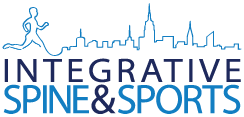Hip Labral Tear – 8 Proven Exercises To Alleviate Hip Pain
May 27, 2021
Did you know Lady Gaga had to cancel her world tour because of a labral tear?
Labral tears are one of the more common diagnoses when it comes to hip pain especially in the athletic world. Performers, dancers and athletes are all prone to suffering with hip pain at some point in their careers.
But hip pain and hip instability doesn’t have to put you in sidelines if you seek out treatment early on. Keep reading if you want to learn more about labral tears and how to treat them.
What is the labrum?
The Acetabular Labrum, commonly known as the “Hip Labrum”, is a fibrous ring of cartilage that encircles the hip socket. Its primary job is to hold the thighbone in place, providing stability for the entire lower body. When functioning properly, the labrum manages fluid within the joint, acting like a rubber seal, allowing ease of movement.
The hip is a complex joint that allows the leg to move in multiple planes and directions. As a result, many factors can lead to malfunction or pain, the most common being a hip labral tear. A tear of the labrum can be very painful and if left untreated, can lead to debilitating instability of the hip.
Symptoms of a labral tear
Symptoms of a hip labral tear are easy to detect. Commonly, pain originates deep in the groin, accompanied by soreness in the hips, hamstrings, abdominals or lower back. Often, patients feel discomfort, even during simple, stress-free activities such as walking, twisting or sitting in a car or at a desk.
Symptoms include:
- Pain in the hip or groin with crossing your legs
- Pain in the hip at end ranges
- Pinching, catching or a grating feeling in the hip
- Pain with combined flexion, adduction, and internal rotation (knee across chest)
- Pain with combined flexion, abduction, and external rotation (knee bent and resting out to side)
- Pain with resisted straight leg raise (raising leg against resistance)
What causes a labral tear?
A hip labral tear can be caused in a variety of ways, including sudden or erratic movement, repetitive stress or direct trauma to the joint.
A common cause of a hip labral tear is over-use. In other cases, injury can result from unchecked structural abnormalities of the bone, which simply worsen over time.
The good news is that there are now proven exercises and treatments, which can repair or reconstruct a damaged joint, restoring hip function and alleviating pain from a labral tear in the hip.
At Integrative Spine & Sports, a sports medicine clinic in NYC, we treat for this condition all the time. We also see patients for this condition at our sister practice, FemFirstHealth, which is a women’s health physical therapy practice in NYC.
Exercises and stretches to alleviate hip pain
With the approval of your doctor, give these a go and see how they feel.
1. Standing Hip Abduction (with a resistance band)
Standing Hip Abductions target the muscles of the outer hip, which are responsible for maintaining proper leg alignment.
- Begin by looping a resistance band around the outside of each ankle
- Stand up straight and holding the upper body steady, lift one leg up and as far to the side as possible
- Pause and return to the original position
- If needed, support yourself with a sturdy object such as a chair or a dowel
- Perform 3 sets of 10 repetitions
2. Single Leg Bridge
Single Leg Bridges target the Gluteus Maximus, providing power, balance and stability.
- Lying flat on your back, place your feet on the floor, shoulder width apart
- Keeping one leg straight, tighten the abdominals and press your heel into the ground
- Straighten the opposite leg, driving the hips upward
- Finish the movement by squeezing your glutes
- Perform 3 sets of 10
- For added resistance, place your feet on a low bench or a BOSU
3. Partial Squats (with resistance band)
Partial Squats work the Gluteus Medius, Hip Abductors and Quadriceps muscles.
- Start with a band around both legs, just above the knees
- Position feet shoulder width apart, keeping your torso upright and your back slightly arched
- Bend your knees, slowly lowering your hips until your thighs are parallel to the floor
- As you squat, press your thighs outward, keeping constant tension in the band
- Perform 3 sets of 10 repetitions
4. Single leg balance on unstable surface
Standing on a single leg increases core stability, strength and balance.
- Using caution, begin by standing on a pillow or yoga mat, holding your arms directly out to the side
- As you gain confidence and improve coordination, try balancing on a stability disc or a BOSU ball
- Hold for 3 sets of 30 seconds and repeat with each leg
- Support yourself with a chair or dowel, if needed
More exersises you can try:
- Kneeling Hip Flexor Stretch — Helpful for opening up the front of the hip and creating more length in the hip flexors and quads for hip extension movements and arabesque. Caution if you have knee pain. Make sure to use a cushion, towel or rolled up yoga mat underneath the knee during the stretch. The stretch should be primarily felt along the front of the thigh and hip. If you experience any knee pain, stop.
- Clamshells with Develope — This exercise is meant to help strengthen the abdominals and the external rotators of the hip — the muscles you should be using to turn out your legs and to help you balance on one leg in a turned out position. You want to keep your abdominals engaged when performing this exercise and make sure you can place a hand under your waist line when lying down on the mat. During the exercise, only the hip is rotating outwards and the work should be felt deep into the back of the hip. When performing the develope make sure you are not sinking into the mat and or hiking the hip up the get the leg higher — keep the torso lifted and long and maintain space in the hip when reaching the leg up.
- Shin box — This exercise is meant to stretch the internal rotators of the hip and then get those same muscles to fire up. Start off by sitting into the shin box position (90 degrees from hip to knee in the front; 90 degrees from hip to knee in the back) and see if you can get equal weight into both sit bones. When you achieve that, begin to shift your weight forward slightly maintaining a neutral spine and lift your back foot off the mat.. Keep the back knee in contact with the mat. As you can see, my mobility and control is pretty limited and something I am working on. A progression of this exercise would be to use less assistance from your hands and to lift the lower leg higher.
- Hip Controlled Articular Rotations –This exercise is meant to teach you how to control and increase your symptom free available range of motion in the hip without compensating. You want to make sure you are not creating any symptoms as you range the hip – no clicking, pinching or hiking up of the pelvis to get the leg higher. You can see I am holding onto a couch to help me focus solely on lifting the leg as high as I can. A progression of this exercise would be to go hands free, lift the leg higher and finally to add a kettle bell into the hand of the moving leg.
With the approval of your doctor, give these a go and see how they feel.
When you’re ready, seek out a physical therapist to help you get to the next level.
Can a labral tear heal completely?
The good news is that, many of our patients who have labral tears become non-symptomatic with conservative treatment. The first thing to do would be to see a physical therapist or orthopedist specialist to evaluate you to determine if you could have a possible labral tear.
There are several other diagnosis which could mimic a labral tear and you want a professional to evaluate your spine, hip, knee and ankle mechanics to determine where the symptoms are emanating from.
If the symptoms are indeed emanating from a possible labral tear, conservative treatment could consist of physical therapy which can include soft tissue mobilization, joint mobilizations, modifying activities for a short time period and a targeted exercise, stretching and mobility regimen to be performed first with your therapist and then on your own as prescribed by your therapist.
Book an appointment
For those suffering from hip pain, consider seeing our specialists at Integrative Spine & Sports in NYC. We see many patients for hip pain and we have a lot of experience helping patients with this condition.
To get in touch, schedule an appointment now or call us at 212-362-4742.
We also offer Telehealth appointments. Book an assessment from the comfort of home. To book a Telehealth appointment, click here.
Sources:
- http://www.mayoclinic.org/diseases-conditions/hip-labral-tear/home/ovc-20270126
- http://www.moveforwardpt.com/symptomsconditionsdetail.aspx?cid=fabdfb4e-5fb5-4077-b341-df5d04a93605
- Lewis, C. L., Sahrmann, S. A., & Moran, D. W. (2007). Anterior hip joint force increases with hip extension, decreased gluteal force, or decreased iliopsoas force. Journal of Biomechanics, 40(16), 3725-3731. doi:10.1016/j.jbiomech.2007.06.024
- Yazbek, P. M., Ovanessian, V., Martin, R. L., & Fukuda, T. Y. (2011). Nonsurgical Treatment of Acetabular Labrum Tears: A Case Series. Journal of Orthopaedic & Sports Physical Therapy, 41(5), 346-353. doi:10.2519/jospt.2011.3225
- Huang R, Diaz C, Parvizi J. Acetabular Labral Tears: Focused Review of Anatomy, Diagnosis, and Current Management. The Physician and Sportsmedicine. 2012;40(2):87-93. doi:10.3810/psm.2012.05.1968.
- Hunt D, Clohisy J, Prather H. Acetabular Labral Tears of the Hip in Women. Physical Medicine and Rehabilitation Clinics of North America. 2007;18(3):497-520. doi:10.1016/j.pmr.2007.05.007.
- Mayes S, Ferris A-R, Smith P, Garnham A, Cook J. Similar Prevalence of Acetabular Labral Tear in Professional Ballet Dancers and Sporting Participants. Clinical Journal of Sport Medicine. 2016;26(4):307-313. doi:10.1097/jsm.0000000000000257.
- Neumann G, Mendicuti A, Zou K, et al. Prevalence of labral tears and cartilage loss in patients with mechanical symptoms of the hip: evaluation using MR arthrography. Osteoarthritis and Cartilage. 2007;15(8):909-917. doi:10.1016/j.joca.2007.02.002.












